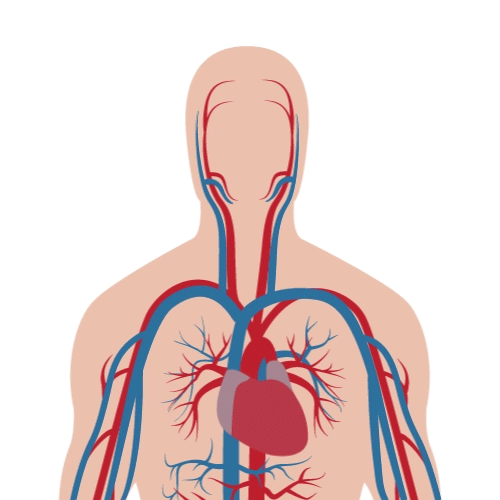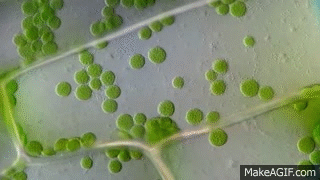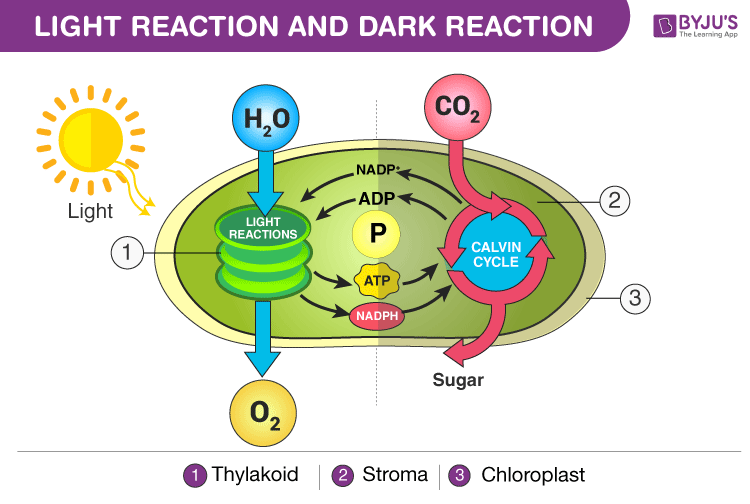Converting Light Energy Into Chemical Energy
Photosynthetic autotrophs, such as plants, can use the energy in light to make glucose, a simple sugar. Glucose is a perfect energy molecule because it is stable, contains a lot of energy, and is a primary building block used to make larger carbohydrates like starch. When a plant needs energy, it converts glucose into ATP. When the plant stores energy, hundreds of glucose molecules bond together to form starch.
| This is Eddie, a Level 37 Dragon Fruit | This is Freddie, a Level 14 Green Dragon |
|---|---|
 |  |
| Eddie’s cells have chloroplasts; therefore, Eddie can undergo photosynthesis | Freddie’s cells do not have chloroplasts; therefore, Freddie cannot undergo photosynthesis |
Photosynthesis is the process that converts the energy in light into chemical energy (glucose). Here is the chemical formula:
Carbon dioxide + Water + (Light Energy) –> Oxygen Gas + Glucose
6 CO2 + 6 H2O + (Light Energy) –> 6 O2 + C6H12O6
CO2, H2O, and Light Energy are the reactants, which means they are the three things a plant needs to do photosynthesis. Oxygen gas and glucose are the products because they result from CO2, H20, and light energy reacting with one another.


Chloroplasts
Your body comprises many organs that work together to keep you alive and healthy. For example, your heart is an organ that pumps blood throughout your body so cells can get the energy and oxygen they need.

Cells have little organs, too, called organelles. Photosynthesis occurs in organelles called chloroplasts. Chloroplasts contain small, circular membranes that look like pancakes called thylakoids. The thylakoids sit in a thick solution called the stroma. Chlorophyll and other plant pigments are scattered throughout the thylakoid membrane, which absorbs light energy. The absorbed energy moves to the stroma, where the chloroplast uses it to make glucose.




A Quick Review of the Atom
Atoms comprise a nucleus and electron orbitals. The nucleus contains positively charged protons and neutral neutrons. The electron orbitals contain negatively charged electrons. The energy stored or released during chemical reactions involves electrons’ movement between orbitals, reactants, and products.

Energy Taxi
Chemical bonds between atoms form by losing, gaining, or sharing electrons. During photosynthesis, light energy excites electrons in the plant pigments. The plant cell uses the energy in the electrons to make glucose. Electron taxis pick up electrons at the thylakoid membranes and transport the electrons to the stroma. The electrons exit the taxies at the stroma, and their energy helps bond carbon dioxide (CO2) to hydrogen ions (H+), resulting in glucose. The empty taxi returns to the thylakoid to pick up more electrons, and the process repeats.
NADP+ is the electron taxi used during photosynthesis. NADP+ is an empty taxi that picks up electrons at the thylakoid. The taxi becomes NADPH while it transports the electrons and becomes NADP+ again when it drops off the electrons in the stroma.


ATP Synthase
ATP synthase is an enzyme. An enzyme is a protein that speeds up a chemical reaction. For example, the enzymes in your mouth, stomach, and small intestine help you break down the food you eat in minutes to hours. If you did not have digestive enzymes, you could still digest food, but it would take days, weeks, or even years.
ATP synthase speeds up the chemical reaction that converts ADP + P into ATP. The name of ATP synthase tells you what it does – it synthesizes (makes) ATP. Chloroplasts need to make ATP rapidly to make a steady supply of glucose.

Photosynthesis Simplified
Here is the complex process of photosynthesis simplified:
Light Reactions
- In the thylakoid membranes of chloroplasts, chlorophyll absorbs light energy and transfers it to electrons.
- The energy in the movement of the electrons is used to make ATP and NADPH
- Water is split to replenish the lost electrons, which produces oxygen gas
Dark Reactions
- In the stroma of a chloroplast, the energy in NADPH and ATP is used to make glucose by bonding CO2 to H+.

A More Complex Explanation of Photosynthesis
The Light-Dependent Reactions
Photosynthesis happens in two stages. The light-dependent reactions are the first stage, starting with exposure to light. The Calvin cycle, or dark reactions, does not directly require light but does require energy in the light-stimulated electrons.
The light-dependent reactions comprise a series of complex reactions that convert the energy in light into energy stored in ATP and the electron taxi NADPH. The light reactions occur in the thylakoid membrane in a chloroplast.
Here is a brief explanation of the light-depend reactions:
- Chlorophyll absorbs light energy
- The light energy transfers to an electron (e–), and the e– moves to the electron transport chain (ETC)
- Water molecules are split into O2 and H+ ions to replenish the lost e–
- In the ETC, energy from the e– is used to pump H+ ions into the side with more H+ ions
- The electron taxi NADP+ picks up the e– and an H+ ion and becomes a full taxi (NADPH)
- The large concentration of H+ ions has built up a lot of potential energy (energy that has the potential to be used)
- H+ ions then diffuse across the membrane through an ATP synthase protein, which spins and converts ATD + P into ATP.

The Calvin Cycle (The Dark Reactions)
The Calvin cycle happens in the stroma of a chloroplast. It is also known as the dark reactions because the Calvin cycle does not directly need light to work. Instead, the Calvin cycle uses the energy in ATP and NADPH to make sugars. Therefore, the Calvin cycle still depends on light, just not directly.
Here is how the Clavin cycle works:
- The chloroplast uses the energy in ATP and NADPH to bind CO2 to a 5-carbon molecule, which creates glucose.
That’s it. (The Calvin cycle is much more complex than I have given you. If you want to know more, take AP Biology and click here.)
Below is a picture of a kitty in a turtle shell. You may think, “How does a kitty in a turtle shell related to photosynthesis?” Well, the better question is, “How is a kitty in a turtle shell not related to photosynthesis.”





